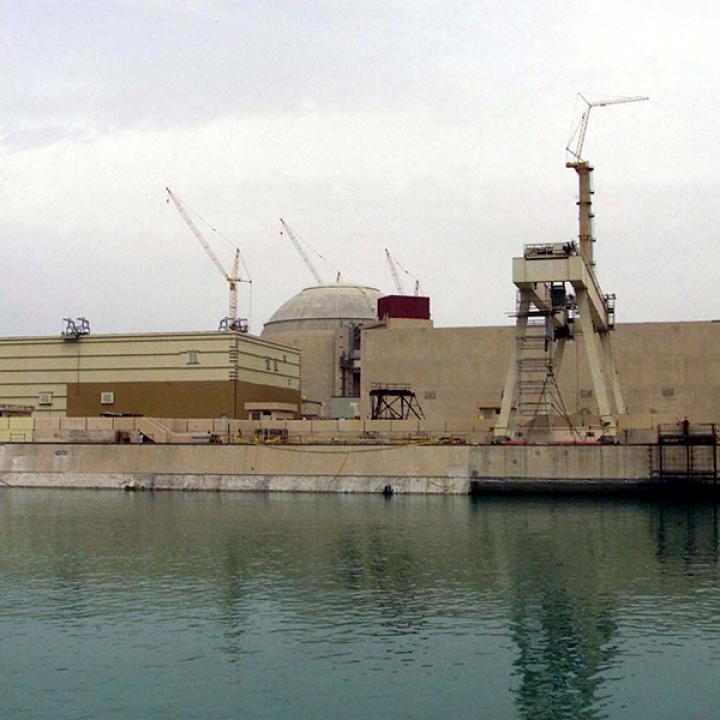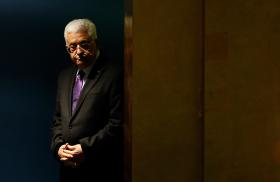

The regime's most secure uranium-enrichment site has doubled capacity since May, and its suspected top bomb-maker is back on the case.
Iranian Supreme Leader Ali Khamenei claimed last week that his government isn't interested in nuclear weapons: "Our motto is nuclear energy for all and nuclear weapons for none," he said. A better perspective was provided almost simultaneously from the world's nuclear watchdog, the International Atomic Energy Agency, which on Aug. 30 released its latest report on Iran's nuclear activities.
The report, written in a mix of bureaucrat-speak and obscure science, nevertheless conveys a worrying message. It shows that Iran continues to expand its capacity for enriching uranium. There are now two new groups of centrifuges installed at Fordow -- the hardened site built under a mountain near the holy city of Qom -- which signals a doubling of the site's capacity since May.
Crucially, Iran continues to stockpile uranium enriched to 3.5% and 20% purity -- levels for which Iran has no immediate use unless it is planning to make an atomic bomb. (Its stockpiles of 20% uranium far exceed Tehran's claimed needs for a reactor making medical isotopes.)
Iran is now operating around 11,000 centrifuges categorized as "IR-1," which are based on a Dutch design acquired by the Pakistani scientist A.Q. Khan. This means that, despite international sanctions and surveillance, Iran has acquired (and perhaps continues to acquire) important supplies from abroad, particularly maraging steel and high-strength aluminum. Alternatively, and no less worrying, is the possibility that Iran is now able to produce such special metals domestically.
A piece of apparent good news is that Iran's IR-1 centrifuges are performing at half their design potential, producing less enriched uranium than they might otherwise. This indicates quality problems, perhaps due to the manufacturing process or to the raw materials used. It also appears that Iran remains slow in developing more advanced centrifuge types. This could be because of design and manufacturing problems. Or Iran could be saving the advanced centrifuges for another secret, yet-to-be-revealed facility. We can only speculate.
Judging from this report, Iran seems determined to achieve the capability of producing nuclear materials suitable for nuclear weapons. Whether it has made a decision to produce a fully operational nuclear weapon is unclear. (The Obama administration says it hasn't, according to its latest declared intelligence on Iran's government.)
Going forward, the matter of advanced centrifuges will be important to watch. If Iran acquires or develops them, it could pursue a "fast break-out" -- moving within months to 90%-enriched uranium, which is weapons-grade -- using its already sizable and growing inventories of 20%. Once it has five or six bombs-worth of 90% enriched uranium, it would essentially be a latent nuclear-weapon state -- whether it has actually tested a bomb or not.
Indeed, given the intelligence uncertainties involved with monitoring whether such a secretive program moves to "break-out," even a stockpile of five or six bombs-worth of 20%-enriched uranium would effectively make Iran a nuclear-weapon state.
Last week's IAEA report also shows that inspectors continue to struggle to get access to the controversial site of Parchin, outside Tehran, where satellite imagery shows that Iran has carried out substantial landscaping and construction activities, presumably to cover up past nuclear work. Similar Iranian obstructionism and destruction of evidence has taken place in the past.
Still, the IAEA has powerful inspection tools -- plus information from member states such as the U.S. -- which means it could take a view on what earlier happened at Parchin. The suspicion is that Iran used a giant steel chamber at the site to experiment on "implosion," the technique of squeezing a nuclear explosive (such as highly enriched uranium) into a critical mass using conventional explosives. Evidence of such testing would be a "smoking gun" indicating Iranian military nuclear intentions.
Cautious politicians will argue there is still time for diplomacy, plus sanctions and military threats, to succeed. But Iranian leaders give little impression they are about to give in to pressure. And during last week's flurry of news, this newspaper reported that Iran's suspected chief nuclear bomb maker, Mohsen Fakhrizadeh, appears to have been brought back to the fore after several years of apparently being sidelined.
The IAEA report concludes by saying that Director-General Yukiya Amano "will continue to report as appropriate." But Mr. Amano does not have a sign on his desk saying "the buck stops here." The future of Iran's nuclear program is in the hands of whoever does.
Simon Henderson is the Baker fellow and director of the Gulf and Energy Policy Program at The Washington Institute. Olli Heinonen, a former top IAEA inspector, is a senior fellow at the Harvard Kennedy School's Belfer Center. Their publications include the new Washington Institute study Nuclear Iran: A Glossary of Terms.
Wall Street Journal



